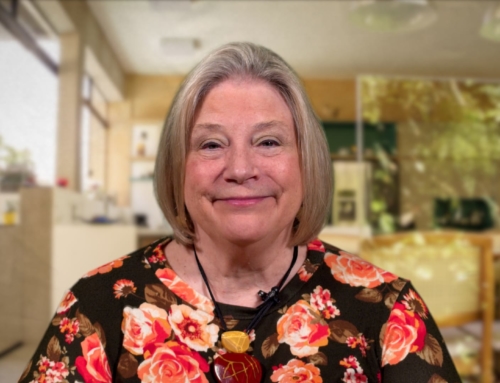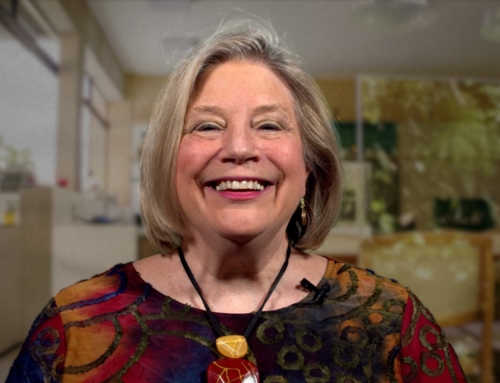If any of you have attended my conference presentations or live trainings, you know I always start my presentation at the door.
I make it a special point to greet participants from the “get-go” with a handshake and good eye contact. I introduce myself and ask for the person’s name and repeat it. We are all about connection so I say, Dare to connect! With contact and connection, it is easier for students or clients to relax. Eye contact unconsciously conveys, “I am not going to eat you for lunch.”
The beauty of connection is that the payoff is mutual. Interactive regulation goes both ways – I get to relax more too.
It helps that I am a relationship person first and foremost.
But there are several good scientific reasons for doing this type of initial contact. According to the Social Engagement System researcher, Stephen Porges, it takes your “anxiety-biased” brain and your “at the ready” threat response at least 10-20 seconds to scan another person via eye contact and/or physical presence. In that time, you instinctively down-regulate when that other is perceived as reasonably safe. (Note that safe touch can include a handshake or gentle touch on the arm, elbow or shoulder.)
Since your body gets a “read” whether someone is safe or not very quickly, take full advantage of that brief, decisive window of opportunity. Establish rapport as a primary objective, not as an afterthought. It melts away any residual resistance to feeling the safety and trust within a given group. Everyone wins when they can relax and heal together as a tribe!
Think about how you can initiate rapport sooner rather than later in your practice by integrating “Physiological Safety Boosters.” Here are some of my new favorite tips on the “meet and greet” that I discovered in Patti Woods’ book “Snap: Making the Most of First Impressions.”
When meeting someone, help your clients learn the common sense etiquette of the meet and greet:
- Rise, if you are seated.
- Approach with confidence.
- Keep your right hand free for handshaking.
- Keep electronic devices out of view for the entire interaction. THIS IS A BIG ONE!
- Smile briefly and don’t overdo it, as it can reduce personal empowerment.
- Make good and kind eye contact for three seconds – not more nor less – for the best support of trusting feelings. Don’t stare, but don’t look at your shoes and socks either.
- Face the person heart-to-heart.
- With clean and dry hands, reach out with your whole arm, extending your right hand. This shows you are confident and authentically want the connection.
- Offering your thumb on top indicates you desire equality in your interaction.
- Make palm-to-palm contact to show your desire to be open and honest in your communication.
- Wrapping your fingers around the other’ hand with equal pressure indicates your ease with equality.
- Be firm in your handshake. Research shows few of us want to continue contact with a person with a wimpy handshake.
- Don’t be a bone crusher – some folks don’t realize that it is painful. Another 80 percent may intend be overpowering due to overcompensating for low self-esteem.
And finally, this is my own tip to you:
- Relax and BE YOURSELF – After all, EVERYONE ELSE IS ALREADY TAKEN!
Warmly,
Diane
2 Comments
Comments are closed.







What if you are not accustomed to hand-shaking? +/or, you sense it might be an imposition, touching a new client? I use close gestures to indicate welcome into the space.
Thanks so much Diane! This is a wonderful summary. I used to work in sales and marketing and this is what I did! . . . well except for the cell phone part. It didn’t exist then! My “cell” phone was about as big as a mans boot and was hard wired into my car!
Thanks for all you do,
fondly
Suzie